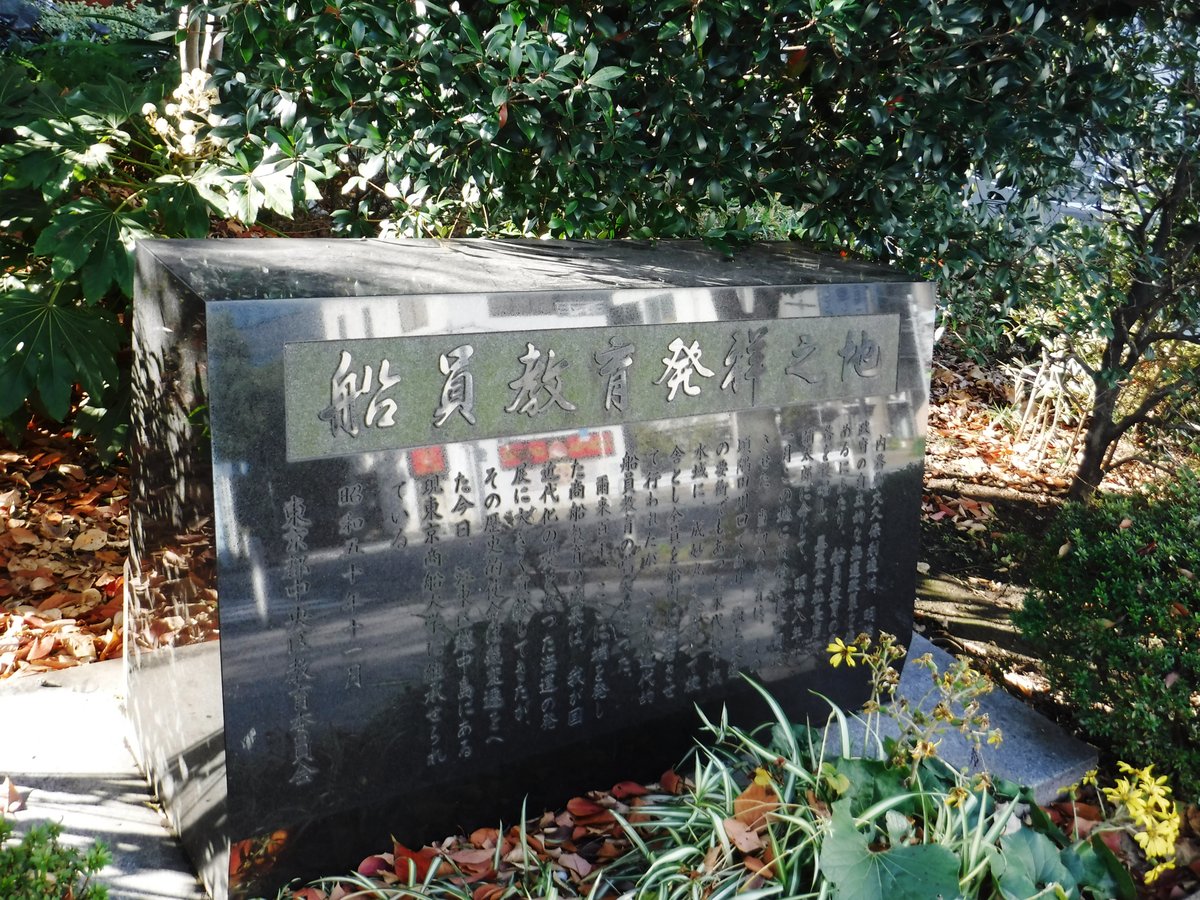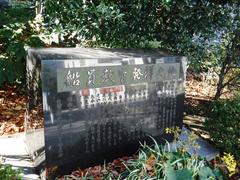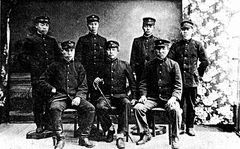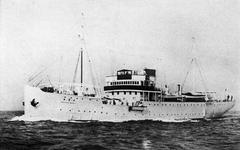
Tokyo University of Marine Science and Technology Visiting Hours, Tickets, and Historical Sites Guide
Date: 14/06/2025
Introduction
The Tokyo University of Marine Science and Technology (TUMSAT) stands as a testament to Japan’s deep-rooted maritime culture and its ongoing pursuit of marine science excellence. Located in Tokyo, TUMSAT is more than just an academic institution—it is a living museum of Japan’s oceanic heritage, featuring historic ships, museums, and Meiji-era architecture. With origins tracing back to the late 19th century, TUMSAT is a must-visit for maritime history enthusiasts, students, and travelers seeking unique cultural experiences in the heart of Tokyo. This detailed guide covers everything you need to know about visiting hours, ticketing, campus highlights, travel tips, and surrounding attractions, ensuring a seamless and enriching visit. (TUMSAT Official Website), (Tourist Link Tokyo TUMSAT Overview)
Campus Locations and Access
TUMSAT operates two main campuses:
- Shinagawa Campus (Minato-ku): Headquarters and home to the School of Marine Life Science as well as the Faculty of Marine Resources and Environment.
- Etchujima Campus (Koto-ku): Hosts the Faculty of Marine Engineering and specialized maritime training facilities.
Both campuses are easily accessible:
- Shinagawa Campus: 4-5-7 Konan, Minato-ku, Tokyo 108-8477. Approximately a 10-minute walk from Shinagawa Station (JR lines, Keikyu Line, Shinkansen, Tokyo Monorail, and Rinkai Line via Tennozu Isle).
- Etchujima Campus: 2-1-6 Etchujima, Koto-ku, Tokyo 135-8533. A short walk from Etchujima Station (JR Keiyō Line or Tokyo Metro Tozai Line).
IC cards like Suica and Pasmo are recommended for easy use of Tokyo’s public transport. Both campuses are wheelchair accessible and provide English signage in most public areas.
Historical and Cultural Significance
TUMSAT’s legacy is intertwined with Japan’s maritime modernization. The Shinagawa Campus traces its roots to the Tokyo University of Fisheries, founded in 1888 (Wikipedia), while the Etchujima Campus evolved from the Mitsubishi Nautical School, established in 1875 (educativ.net). These institutions merged in 2003 to form TUMSAT, Japan’s only university exclusively dedicated to marine sciences. The campuses feature preserved Meiji-era buildings, historic training vessels, and museums that vividly narrate over a century of maritime history.
Visiting Hours and Ticket Information
General Access
- Campus Hours: Weekdays, 9:00 AM – 5:00 PM. Some areas may close on weekends, national holidays, or during special university events.
- Admission: Entry to campus grounds is free. Some museums or ship tours may require advance booking or a nominal fee.
Museum of Marine Science (Shinagawa Campus)
- Hours: 9:00 AM – 5:00 PM, Tuesday to Sunday (closed Mondays and national holidays).
- Admission Fee: Typically free or low-cost.
- Exhibits: Interactive displays on marine biology, oceanography, fisheries science, and ship technology.
Historic Ships
- Unyo-maru (Shinagawa Campus): Open during museum hours. A restored 1909 bark-type sailing ship, symbolizing Japan’s maritime training history.
- Meiji-maru (Etchujima Campus): An Important Cultural Property, open to visitors during museum hours or by special arrangement. The adjacent Meiji-maru Maritime Museum highlights the ship’s role in establishing Japan’s Marine Day holiday.
Guided Tours
- Available during open campus days, festivals, and by prior arrangement. Most tours are in Japanese; English-language materials and occasional English tours may be available upon request.
Special Events
- Kaiyodai Festival: Annual autumn festival with open campus events, food stalls, research demonstrations, and performances.
- Open Campus Days: Tours, lectures, and interactive workshops open to the public.
Marine Science Monument
Located near the Shinagawa Campus, the Marine Science Monument commemorates Japan’s pioneering marine research and education. The monument is open daily from 9:00 AM to 5:00 PM, with free admission. Guided tours are available on weekends and public holidays (advance booking recommended). (Marine Science Monument Details)
Campus Facilities for Visitors
- Dining: Campus cafeterias offer affordable Japanese meals, often featuring seafood. Open to visitors during lunch hours.
- Shops: Convenience stores and university bookstores sell snacks, beverages, and maritime-themed souvenirs.
- Rest Areas: Benches and green spaces throughout the campus provide pleasant spots to relax and observe daily life.
Notable Attractions and Points of Interest
- Historic Buildings: Meiji-era structures at both campuses reflect TUMSAT’s origins and Japan’s modernization.
- Exhibitions: Occasional public exhibitions highlight marine science research, navigation technology, and ocean ecology.
- Training Vessels: The Umitaka-maru, a modern research vessel, sometimes opens for public tours during special events.
Nearby Attractions
- Tokyo Bay Waterfront: Scenic walks, parks, and promenades with views of the bay.
- Tennozu Isle: Art galleries, trendy cafes, and waterfront shopping near Shinagawa.
- Epson Aqua Park Shinagawa: Popular aquarium located close to Shinagawa Station.
- Historical Maritime Museum: Nearby facility with deeper insights into Japan’s maritime past.
Practical Visitor Tips
- Best Times to Visit: Weekdays for a quieter experience; open campus days and festivals for special access and English support.
- Photography: Allowed in outdoor and public areas; confirm with staff before photographing inside museums or research facilities.
- Language: English signage is present in key areas, but most communication is in Japanese. Translation apps are helpful.
- Accessibility: Both campuses provide wheelchair access, ramps, elevators, and accessible restrooms.
Frequently Asked Questions (FAQ)
Q: What are TUMSAT’s visiting hours?
A: Generally, weekdays from 9:00 AM to 5:00 PM. Museums and special sites may have specific hours—check the official website for details.
Q: Are there entry fees?
A: Campus entry is free, with some museums or guided tours requiring a small fee or prior booking.
Q: Are guided tours available in English?
A: English-language materials are available; guided tours are mainly in Japanese but may be arranged in English during international events or upon request.
Q: How do I get to the campuses?
A: Shinagawa Campus is near Shinagawa Station or Tennozu Isle Station; Etchujima Campus is near Etchujima Station.
Q: Is the campus wheelchair accessible?
A: Yes, both campuses have accessibility features.
Q: Is parking available?
A: Limited parking is available. Public transportation is recommended due to traffic and parking constraints.
Planning Your Visit
- Visit during festivals or open campus days for the fullest experience.
- Check the TUMSAT official website for the latest updates on hours, events, and visitor protocols.
- Download the Audiala app for maps, audio guides, and event notifications.
Summary & Visitor Recommendations
Visiting the Tokyo University of Marine Science and Technology immerses you in Japan’s maritime past and present. With its historic ships, interactive museums, preserved academic buildings, and regular public events, TUMSAT offers enriching experiences for all visitors. Its convenient location, low-cost or free admission, and accessibility make it a standout destination among Tokyo’s cultural and historical sites. Plan your journey to coincide with open campus days or the Kaiyodai Festival for unique events and English support. For updated information, always refer to the university’s official channels and consider using the Audiala app for a seamless visit. (TUMSAT Visitor Information), (Marine Science Monument Details)
Useful Links
- TUMSAT Official Website – Visitor Information
- Tourist Link – Tokyo University of Marine Science and Technology Overview
- TUMSAT Visiting Information
- Marine Science Monument Official Information
- Tokyo Public Transport Guide

































































































































































































































